#International Conference On Civil Engineering
Explore tagged Tumblr posts
Text
Q&A: Transforming research through global collaborations
New Post has been published on https://thedigitalinsider.com/qa-transforming-research-through-global-collaborations/
Q&A: Transforming research through global collaborations


The MIT Global Seed Funds (GSF) program fosters global research collaborations with MIT faculty and their peers abroad — creating partnerships that tackle complex global issues, from climate change to health-care challenges and beyond. Administered by the MIT Center for International Studies (CIS), the GSF program has awarded more than $26 million to over 1,200 faculty research projects since its inception in 2008. Through its unique funding structure — comprising a general fund for unrestricted geographical use and several specific funds within individual countries, regions, and universities — GSF supports a wide range of projects. The current call for proposals from MIT faculty and researchers with principal investigator status is open until Dec. 10.
CIS recently sat down with faculty recipients Josephine Carstensen and David McGee to discuss the value and impact GSF added to their research. Carstensen, the Gilbert W. Winslow Career Development Associate Professor of Civil and Environmental Engineering, generates computational designs for large-scale structures with the intent of designing novel low-carbon solutions. McGee, the William R. Kenan, Jr. Professor in the Department of Earth, Atmospheric and Planetary Sciences (EAPS), reconstructs the patterns, pace, and magnitudes of past hydro-climate changes.
Q: How did the Global Seed Funds program connect you with global partnerships related to your research?
Carstensen: One of the projects my lab is working on is to unlock the potential of complex cast-glass structures. Through our GSF partnership with researchers at TUDelft (Netherlands), my group was able to leverage our expertise in generative design algorithms alongside the TUDelft team, who are experts in the physical casting and fabrication of glass structures. Our initial connection to TUDelft was actually through one of my graduate students who was at a conference and met TUDelft researchers. He was inspired by their work and felt there could be synergy between our labs. The question then became: How do we connect with TUDelft? And that was what led us to the Global Seed Funds program.
McGee: Our research is based in fieldwork conducted in partnership with experts who have a rich understanding of local environments. These locations range from lake basins in Chile and Argentina to caves in northern Mexico, Vietnam, and Madagascar. GSF has been invaluable for helping foster partnerships with collaborators and universities in these different locations, enabling the pilot work and relationship-building necessary to establish longer-term, externally funded projects.
Q: Tell us more about your GSF-funded work.
Carstensen: In my research group at MIT, we live mainly in a computational regime, and we do very little proof-of-concept testing. To that point, we do not even have the facilities nor experience to physically build large-scale structures, or even specialized structures. GSF has enabled us to connect with the researchers at TUDelft who do much more experimental testing than we do. Being able to work with the experts at TUDelft within their physical realm provided valuable insights into their way of approaching problems. And, likewise, the researchers at TUDelft benefited from our expertise. It has been fruitful in ways we couldn’t have imagined within our lab at MIT.
McGee: The collaborative work supported by the GSF has focused on reconstructing how past climate changes impacted rainfall patterns around the world, using natural archives like lake sediments and cave formations. One particularly successful project has been our work in caves in northeastern Mexico, which has been conducted in partnership with researchers from the National Autonomous University of Mexico (UNAM) and a local caving group. This project has involved several MIT undergraduate and graduate students, sponsored a research symposium in Mexico City, and helped us obtain funding from the National Science Foundation for a longer-term project.
Q: You both mentioned the involvement of your graduate students. How exactly has the GSF augmented the research experience of your students?
Carstensen: The collaboration has especially benefited the graduate students from both the MIT and TUDelft teams. The opportunity presented through this project to engage in research at an international peer institution has been extremely beneficial for their academic growth and maturity. It has facilitated training in new and complementary technical areas that they would not have had otherwise and allowed them to engage with leading world experts. An example of this aspect of the project’s success is that the collaboration has inspired one of my graduate students to actively pursue postdoc opportunities in Europe (including at TU Delft) after his graduation.
McGee: MIT students have traveled to caves in northeastern Mexico and to lake basins in northern Chile to conduct fieldwork and build connections with local collaborators. Samples enabled by GSF-supported projects became the focus of two graduate students’ PhD theses, two EAPS undergraduate senior theses, and multiple UROP [Undergraduate Research Opportunity Program] projects.
Q: Were there any unexpected benefits to the work funded by GSF?
Carstensen: The success of this project would not have been possible without this specific international collaboration. Both the Delft and MIT teams bring highly different essential expertise that has been necessary for the successful project outcome. It allowed both the Delft and MIT teams to gain an in-depth understanding of the expertise areas and resources of the other collaborators. Both teams have been deeply inspired. This partnership has fueled conversations about potential future projects and provided multiple outcomes, including a plan to publish two journal papers on the project outcome. The first invited publication is being finalized now.
McGee: GSF’s focus on reciprocal exchange has enabled external collaborators to spend time at MIT, sharing their work and exchanging ideas. Other funding is often focused on sending MIT researchers and students out, but GSF has helped us bring collaborators here, making the relationship more equal. A GSF-supported visit by Argentinian researchers last year made it possible for them to interact not just with my group, but with students and faculty across EAPS.
#Algorithms#autonomous#Building#carbon#career#career development#Casting#cave#Center for International Studies#change#Civil and environmental engineering#climate#climate change#Collaboration#collaborative#conference#Design#development#EAPS#earth#Emissions#engineering#Environment#Environmental#Europe#experimental#Fabrication#Facilities#Faculty#focus
0 notes
Text

Sage school of engineering and technology & advanced computing organizing international conference on current development in engineering and technology CCET2023 on 29-30th December in collaboration with CSI & IETE.
#conference#engineering#computer science#mechanical engineering#civil engineering#electrical engineering#electronics engineering#sage bhopal#Sage University Bhopal#international conference#CCET2023
1 note
·
View note
Text
The Science of Discovering the Past: Archaeoastronomy
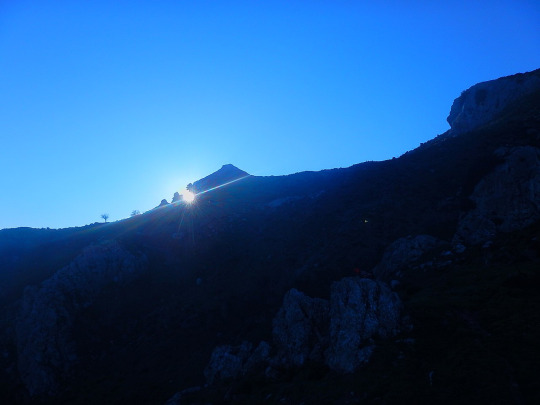
By Girtompir - Own work, CC0, https://commons.wikimedia.org/w/index.php?curid=57252822
The stars have long been part of the human experience, with the night sky being a more vital part of life before the development of modern cities with their lights washing out a majority of the stars. Most cultures had a deep connection with the sky, recording their observations in stories and in their art and writings.

CC BY-SA 3.0, https://commons.wikimedia.org/w/index.php?curid=906430
Archaeoastronomy is an interdisicplinary study of how people 'have understood the phenomena in the sky, how they used these phenomena and what role the sky played in their cultures'. It involves ethnoastronomy, the 'anthropological study of sky watching in contemporary societies' as well as historical astronomy, which focuses on the astronomical records of the past. Unlike modern astronomy, which focuses on observations of the sky and scientific explanations of those observations, archaeoastronomy takes in account the cultural meanings of those observations.
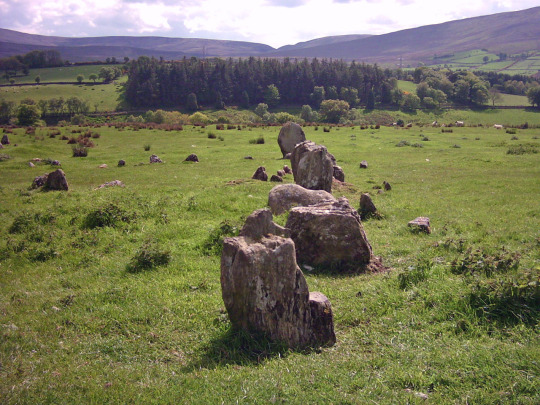
By Alun Salt - https://www.flickr.com/photos/alun/2733498/in/set-68848/, CC BY-SA 2.0, https://commons.wikimedia.org/w/index.php?curid=740899
Archaeoastronomy began with noting the astronomical orientation of ruins, including megalithic sites like Stonehenge, in the 17th and 18th centuries, though the term wasn't coined until 1973 by Elizabeth Chesley Baity. It wasn't until the 1960s that systemic work began by studying megalithic sites in the British Isles. Engineer Alexander Thom and astronomer Gerald Hawkins proposed that Stonehenge was an astronomical computer. While Hawkins' theory was dismissed, Thom performed a survey of megalithic sites in the British Isles. Euan MacKie sought to test Thom's theory by excavating the site of a standing stone at Kintraw in Argyllshire from 1970-1971 to verify if Thom's prediction that the site accurately showed the winter solstice. He found an observation platform on the hill above the stone that proved Thom's prediction correct. Because of this vindication, MacKie checked other sites to verify their alignments before broadly accepting Thom's conclusions.
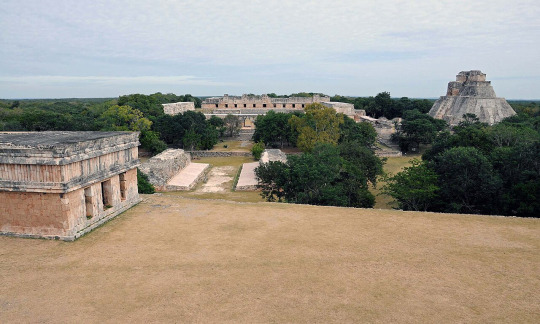
By Adrian Hernandez - Own work, CC BY-SA 4.0, https://commons.wikimedia.org/w/index.php?curid=71192285
Archaeoastronomy was used by anthropologists studying Amerindian civilization. This was different to the study of Neolithic structures in the British Isles in that there were sources about the prehistory, such as the records of colonizers, that were unavailable for British early civilizations. This allows more certain claims that possible in the Old World.
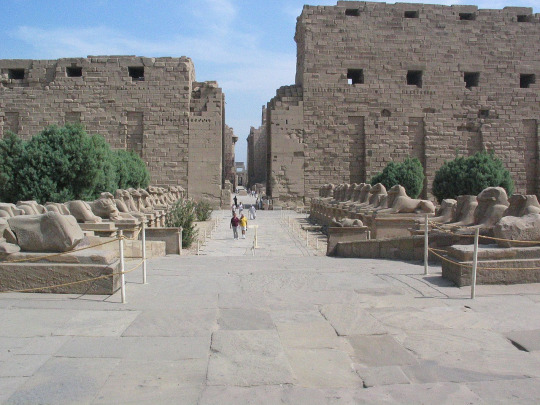
Public Domain, https://commons.wikimedia.org/w/index.php?curid=1126668
In 1981, the International Astronomical Union (IAU) released two volumes on the proceedings from the conference that sought to bring researchers together and encourage the move to interdisciplinary approaches, combining the contextuality of archaeological studies with astronomical studies, seeking to understand the why behind ancient people's fascination with the night sky.
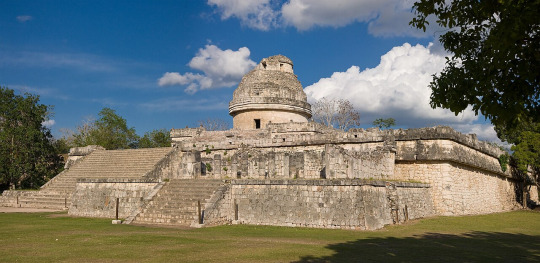
By Fcb981 - Own work, CC BY-SA 3.0, https://commons.wikimedia.org/w/index.php?curid=3862230
There are many ways to do archaeoastronomy, but the two many methodologies are known as 'green archaeoastronomy' and 'brown archaeoastronomy'. Green archaeoastronomy is used where social evidence is relatively scant and relies more on statistical studies. The methods are similar to those developed and used by Thom. Many of these studies are based on the horizon rather than the full sky since that is the easiest part of the sky to align with archaeological sites. Brown archaeoastronomy is close to the history of astronomy or cultural history as it relies on records, both ethnographic records as well as the records of early astronomers with their calendars and rituals. This is the system used to study sites like Chichen Itza in Mexico, where researchers looked at records to find out what the Maya found important in the night sky and then looking at how the sites on the ground aligned to that. They were able to find in the writings that Maya held Venus in high regard, recording the risings and settings of it. They were able to find structures in Chichen Itza that aligned to these points on the horizon. Both have criticisms, with green archaeoastronomy being criticized for lacking social context and failing to answer the question 'why' people in the past built the structures they did and brown archaeoastronomy being criticized for lacking statistical and methodological rigor because each site is studied differently based on the documentation and evidence that has been found relating to the site.
2 notes
·
View notes
Text
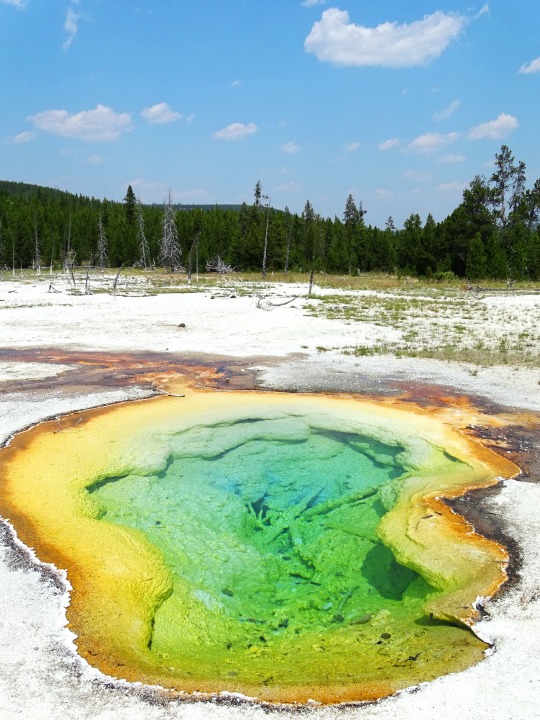





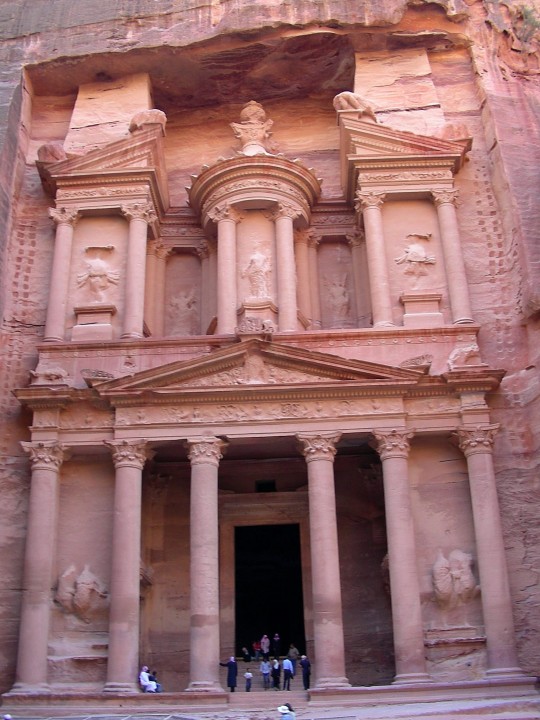


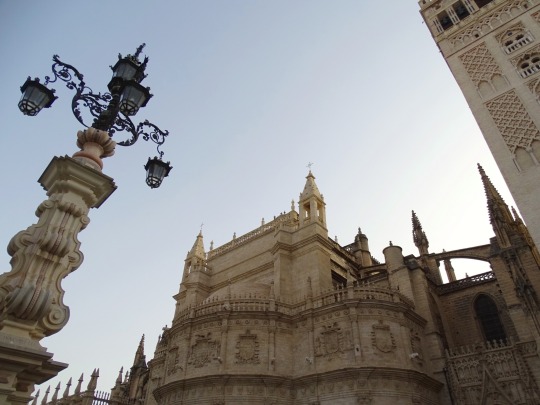



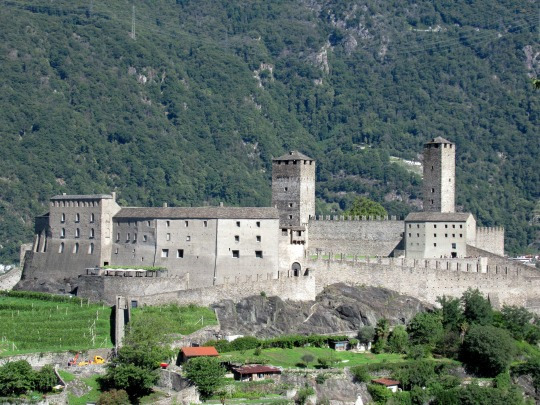


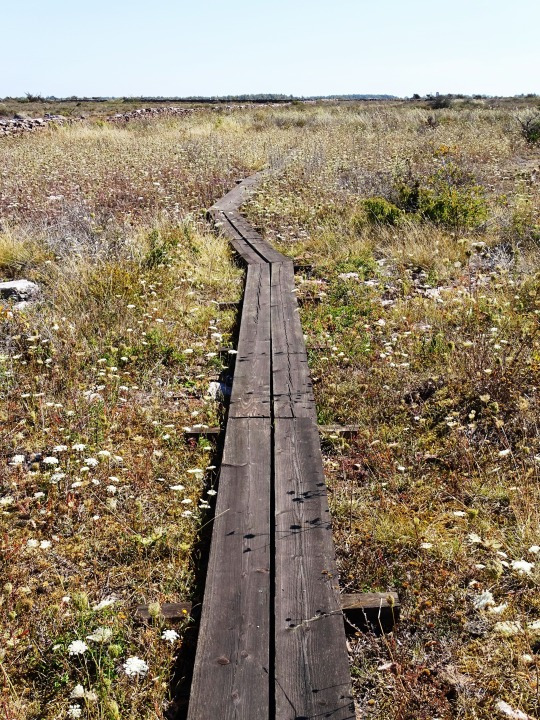











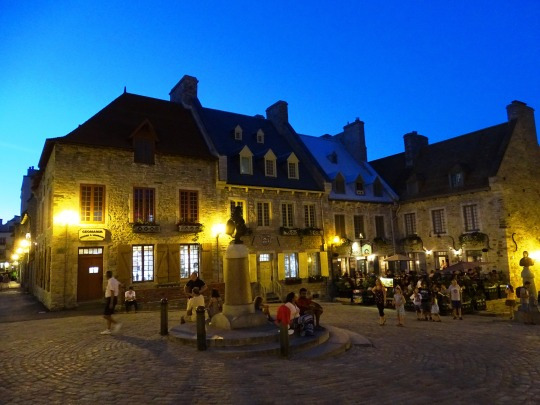

World Heritage Day
Visit and support your local cultural icons and monuments, or travel to see some of the remarkable cultural heritage sites from all over the wide world.
Every day people all over the world celebrate their cultural heritage, simply by living their lives in a way that embodies who they are and where they came from. But one day a year is set aside to celebrate the joint history and heritage of the human race. World Heritage Day encourages us to celebrate all the world’s cultures, and to bring awareness to important cultural monuments and sites, and to espouse the importance of preserving the world’s cultures.
Learn about World Heritage Day
World Heritage Day, which is also known as the International Monuments and Sites Day, celebrates the work carried out by the ICOMOS – International Council on Monuments and Sites. The day is all about increasing the awareness of the importance of the diversity of cultural heritage and preserving it for generations in the future. Ancient monuments and buildings are an asset to us all around the world. However, they need to be protected to ensure that they continue to be an asset for years and years to come. Therefore, the day is a collective effort of communities around the globe.
On this day, there are a number of different events that happen all over the world. This includes a wide range of activities, conferences, and visits to heritage sites and monuments. For those who are unaware, a heritage site is basically a place that is of cultural significance. It preserves the legacy of intangible attributes and physical artifacts of a society or group that is inherited from previous generations.
There are truly some incredible heritage sites and monuments around the world. This includes the Machu Picchu, which is situated in the lush and mountainous terrain high above the Urubamba River in Peru. There are lots of amazing sights in Egypt, and the Pyramids of Giza are one of them. Other places of note include Bagan in Myanmar, Angkor Wat in Cambodia, and the Great Wall of China.
History Of World Heritage Day
So the first (and possibly most confusing?) part of World Heritage Day is that that actually isn’t it’s a formal name. What is popularly known as World Heritage Day is actually called The International Day for Monument and Sites and was established in 1982 by the International Council for Monuments and Sites, or ICOMOS. This organization was established on the principles set forth in the Venice Charter, otherwise known as the 1964 International Charter on the Conservation and Restoration of Monuments and Sites.
The organization was founded after a need was identified to protect these valued locations, and it saw the coming together of experts from hundreds of related fields. These include architects, engineers, geographers, civil engineers, and artists and archaeologists. Each year they work to help ensure that some of the world’s most beautiful sites and important cultural monuments remain preserved for future generations.
Since it’s inception it has grown to include almost 10,000 members in over 150 countries all over the world. Of these 10,000 members over 400 are members from institutions, national committees, and international scientific committees, all working together to save important sites and identify new ones that need to be added to the watch list.
2016 saw the addition of Gorham’s Cave Complex in the UK, the Khangchendzonga National Park in India, and the Persian Qanat in the Islam Republic of Iran. It’s through the tireless efforts of its members and leadership that these places will be preserved for future generations.
There is a theme that is assigned to each World Heritage Day. We would definitely recommend taking a look at the theme for each year, as it will help to give you some direction regarding how to celebrate the day. For example, some of the themes in recent years have included the likes of “Rural Landscapes” and “Shared Cultures, Shared Heritage, Shared Responsibility.”
How to celebrate World Heritage Day
Perhaps the most important way to celebrate World Heritage Day is to search out those locations near you that count as World Heritage Sites, and perhaps pay them a visit. Before doing so research the site and find out what steps are needed to protect it, and respect them during your visit. If you’re feeling more proactive, then perhaps consider submitting a site that you feel is worthy of being protected for it’s cultural importance to ICOMOS. Don’t let an important site disappear from the world, do your part on World Heritage Day to raise awareness and preserve it for future generations.
You should also take a look online to see if there are any events going on in your local area in honor of World Heritage Day. You will find that a lot of events take place to try and increase awareness regarding the preservation of important buildings and monuments. You can get involved in one of these events so that you can lend your support to these important causes. It should not be too difficult to find out what is going on in your local area. If your community has a local Facebook group, you can refer to this for more details.
It is also a good idea to spread awareness regarding this day with the people that you know. This is something you can do with ease via social media. You can post a message that informs your friends, followers, and family members of this day and encourage them to post something too. You could post a photo of one of the best international sites you have visited or one that is on your bucket list, and then ask your followers to reply with their choice. This is a great way of getting everyone involved and raising awareness about this date!
Source
#France#Lisbon#Portugal#Lisboa#travel#architecture#World Heritage Day#WorldHeritageDay#Spain#InternationalDayForMonumentsAndSites#18 April#Dinosaur Provincial Park#Canada#USA#Grand Canyon National Park#Mexico#Chichen Itza#original photography#vacation#tourist attraction#cityscape#landscape#Jordan#Sweden#Switzerland#Bern#Bellinzona#Lugo#Jasper National Park#Rocky Mountains
2 notes
·
View notes
Text
Events 7.20 (before 1940)
70 – Siege of Jerusalem: Titus, son of emperor Vespasian, storms the Fortress of Antonia north of the Temple Mount. The Roman army is drawn into street fights with the Zealots. 792 – Kardam of Bulgaria defeats Byzantine Emperor Constantine VI at the Battle of Marcellae. 911 – Rollo lays siege to Chartres. 1189 – Richard I of England officially invested as Duke of Normandy. 1225 – Treaty of San Germano is signed at San Germano between Holy Roman Emperor Frederick II and Pope Gregory IX. A Dominican named Guala is responsible for the negotiations. 1398 – The Battle of Kellistown was fought on this day between the forces of the English led by Roger Mortimer, 4th Earl of March against the O'Byrnes and O'Tooles under the command of Art Óg mac Murchadha Caomhánach, the most powerful Chieftain in Leinster. 1402 – Ottoman-Timurid Wars: Battle of Ankara: Timur, ruler of Timurid Empire, defeats forces of the Ottoman Empire sultan Bayezid I. 1592 – During the first Japanese invasion of Korea, Japanese forces led by Toyotomi Hideyoshi captured Pyongyang, although they were ultimately unable to hold it. 1715 – Seventh Ottoman–Venetian War: The Ottoman Empire captures Nauplia, the capital of the Republic of Venice's "Kingdom of the Morea", thereby opening the way to the swift Ottoman reconquest of the Morea. 1738 – Canadian explorer Pierre Gaultier de Varennes et de La Vérendrye reaches the western shore of Lake Michigan. 1799 – Tekle Giyorgis I begins his first of six reigns as Emperor of Ethiopia. 1807 – Nicéphore Niépce is awarded a patent by Napoleon for the Pyréolophore, the world's first internal combustion engine, after it successfully powered a boat upstream on the river Saône in France. 1810 – Citizens of Bogotá, New Granada declare independence from Spain. 1831 – Seneca and Shawnee people agree to relinquish their land in western Ohio for 60,000 acres west of the Mississippi River. 1848 – The first Women's Rights Convention in Seneca Falls, New York, a two-day event, concludes. 1864 – American Civil War: Battle of Peachtree Creek: Near Atlanta, Georgia, Confederate forces led by General John Bell Hood unsuccessfully attack Union troops under General William T. Sherman. 1866 – Austro-Prussian War: Battle of Lissa: The Austrian Navy, led by Admiral Wilhelm von Tegetthoff, defeats the Italian Navy near the island of Vis in the Adriatic Sea. 1871 – British Columbia joins the Canadian Confederation. 1885 – The Football Association legalizes professionalism in association football under pressure from the British Football Association. 1903 – The Ford Motor Company ships its first automobile. 1906 – In Finland, a new electoral law is ratified, guaranteeing the country the first and equal right to vote in the world. Finnish women are the first in Europe to receive the right to vote. 1917 – World War I: The Corfu Declaration, which leads to the creation of the post-war Kingdom of Yugoslavia, is signed by the Yugoslav Committee and Kingdom of Serbia. 1920 – The Greek Army takes control of Silivri after Greece is awarded the city by the Paris Peace Conference; by 1923 Greece effectively lost control to the Turks. 1922 – The League of Nations awards mandates of Togoland to France and Tanganyika to the United Kingdom. 1932 – In the Preußenschlag, German President Hindenburg places Prussia directly under the rule of the national government. 1935 – Switzerland: A Royal Dutch Airlines plane en route from Milan to Frankfurt crashes into a Swiss mountain, killing thirteen. 1936 – The Montreux Convention is signed in Switzerland, authorizing Turkey to fortify the Dardanelles and Bosphorus but guaranteeing free passage to ships of all nations in peacetime. 1938 – The United States Department of Justice files suit in New York City against the motion picture industry charging violations of the Sherman Antitrust Act in regards to the studio system. The case would eventually result in a break-up of the industry in 1948.
2 notes
·
View notes
Text
Client Work(Android)|CST2335_Final_GroupProject_F22 2022Soccer match highlights part Output Video|Algonquin College
youtube
Programming Assignment Helper For International Students 𝐖𝐞 𝐚𝐫𝐞 𝐡𝐞𝐥𝐩𝐢𝐧𝐠 𝐬𝐭𝐮𝐝𝐞𝐧𝐭𝐬 𝐨𝐮𝐭! 𝐏𝐫𝐨𝐯𝐢𝐝𝐢𝐧𝐠 𝐬𝐞𝐫𝐯𝐢𝐜𝐞𝐬 𝐟𝐨𝐫 𝐬𝐜𝐡𝐨𝐨𝐥/𝐜𝐨𝐥𝐥𝐞𝐠𝐞/𝐮𝐧𝐢𝐯𝐞𝐫𝐬𝐢𝐭𝐲 𝐚𝐬𝐬𝐢𝐠𝐧𝐦𝐞𝐧𝐭𝐬, 💻 𝐜𝐨𝐮𝐫𝐬𝐞𝐰𝐨𝐫𝐤,𝐥𝐚𝐛 𝐩𝐫𝐨𝐣𝐞𝐜𝐭𝐬/𝐫𝐞𝐩𝐨𝐫𝐭𝐬, 𝐞𝐱𝐚𝐦𝐬, 𝐪𝐮𝐢𝐳𝐳𝐞𝐬, 𝐝𝐢𝐬𝐬𝐞𝐫𝐭𝐚𝐭𝐢𝐨𝐧𝐬,𝐭𝐡𝐞𝐬𝐢𝐬; 𝐚𝐬 𝐰𝐞𝐥𝐥 𝐚𝐬 𝐩𝐫𝐨𝐨𝐟𝐫𝐞𝐚𝐝𝐢𝐧𝐠, 𝐞𝐫𝐫𝐨𝐫 𝐜𝐨𝐫𝐫𝐞𝐜𝐭𝐢𝐨𝐧, 𝐚𝐧𝐝 𝐛𝐮𝐠-𝐟𝐢𝐱𝐢𝐧𝐠. 𝐀𝐥𝐬𝐨 𝐝𝐨𝐢𝐧𝐠 𝐬𝐨𝐟𝐭𝐰𝐚𝐫𝐞 𝐜𝐨𝐦𝐩𝐚𝐧𝐲, 𝐚𝐠𝐞𝐧𝐜𝐢𝐞𝐬 𝐩𝐫𝐨𝐟𝐞𝐬𝐬𝐢𝐨𝐧𝐚𝐥 𝐩𝐫𝐨𝐣𝐞𝐜𝐭𝐬📊
We specialize in the following fields: 📘 Computer Science🔖Programming: 🔖 Python 🔖 Java 🔖 C 🔖 C++ 🔖 C# 🔖 Ruby 🔖 Matlab 🔖 HTML | CSS | JavaScript 🔖 PHP 🔖 CSS 🔖 Databases | SQL 🔖 Android Development 🔖 Algorithms 🔖 Swift 🔖 Networks | CCNA 🔖All kinds of IT work 📘EEE 📘Mechanical Engineering 📘Civil📘ALL type of academic services 📘 Mathematics 📘 Statistics 📘 Marketing 📘 Management 📘 Accounting 📘 Psychology 📘 Business 📘 Economics 📘 Pharmacology 📘 Engineering 📘 Finance 📘 Nursing 📘 Sociology 📘 Literature 📘 Health & Social Care 📘Writing 📘Thesis 📘Report
we provide all type of academic services 🟩Assignments 🟩Projects 🟩Exams 🟩Quizz 🟩Lab 🟩Thesis 🟩Dissertation 🟩Reports 🟩Final year projects 🟩Programming 🟩Coursework 🟩Proposal Writing 🟩Essay writing 🟩Article writing 🟩LSAT exam 🟩Research paper writing 🟩Term paper 🟩Conference Paper 🟩Case study 🟩Proofreading 🟩DATA Analysis 🟩Stata Analysis 🟩Spss 🟩Review articles 🟩Referencing 🟩Correction 🟩Questionnaries 🟩Formatting 🟩Presentation 🟩Synopsis 🟩Ai Removal 🟩Paraphrasing
For take our services contact with us Whatsapp/Telegram:+8801772432396 whatsapp profile link: https://wa.me/+8801772432396 https://wa.me/message/PYHN7PIZEHNQO1 Email 1:[email protected] Email 2:[email protected] Discord username:programmingassignmenthelperbd or Discord username:academiccourseworkservices Discord Server profile link:https://discord.com/invite/C6DQUbgH2w Instagram:https://www.instagram.com/programmingassignmenthelperbd/ Instagram Username:programmingassignmenthelperbd Telegram Account: https://t.me/programmingassignmenthelperbd Telegram Username:@programmingassignmenthelperbd Telegram Phone Number:+8801772432396 skype profile link: https://join.skype.com/invite/w0k4c2of6ts3 skype name:live:.cid.e36c1f8fe9b0bbfd Printerest Account:https://www.pinterest.com/programmingassignmenthelperbd/ Printerest Username:programmingassignmenthelperbd Twitter Account:https://twitter.com/assignmentintl Twitter Username:assignmentintl Tiktok Account:https://www.tiktok.com/@assignmenthelperbd Tiktok Username:assignmenthelperbd Linkedin Company Page: https://www.linkedin.com/showcase/assignment-writing-for-students https://www.linkedin.com/company/programming-assignment-exam-quiz-project-report-helper-for-international-students Facebook Compnay Page: https://www.facebook.com/programmingassignmenthelperforinternationalstudent/ Website:https://academiccourseworkservices.com/
Our Student Review /Client Feedback:https://drive.google.com/file/d/16Ametl8UY-RehW3Q4jYZmM1DxioCG3J8/view?usp=sharing
𝐎𝐮𝐫 𝐰𝐨𝐫𝐤 𝐩𝐨𝐫𝐭𝐟𝐨𝐥𝐢𝐨 𝐥𝐢𝐧𝐤: https://www.youtube.com/channel/UCyOlJCraJuVs6oBUIYOoz0Q?sub_confirmation=1
𝗔𝗹𝗴𝗼𝗻𝗾𝘂𝗶𝗻 𝗰𝗼𝗹𝗹𝗲𝗴𝗲 𝗮𝗽𝗽𝗹𝗶𝗲𝗱 𝗮𝗿𝘁𝘀 𝗮𝗻𝗱 𝘁𝗲𝗰𝗵𝗻𝗼𝗹𝗼𝗴𝘆 𝘄𝗼𝗿𝗸 𝗽𝗼𝗿𝘁𝗳𝗼𝗹𝗶𝗼 𝗹𝗶𝗻𝗸:https://www.youtube.com/playlist?list=PL16VzvGeViA0g1ql7OVnoaNCGgZCZG0Lx
Regards Assignment Helper [Programming Assignment Helper For International Students]
#CST8227#CST2335#CST8333#CST8288#AlgonquinCollege#Android#Java#Python#Enterprise_Application_Programming#Graphical_Interface_Programming#Programming_Language_Research#students_work_output_video#client_work_output_video#cobol#Network_Programming#System_Analysis_and_Design#canaduniversity#canada#internationalstudents#students#computersciencestudents#assignmenthelper#labhelper#academichelper#thesishelper#dissertationhelper#essayhelper#reporthelper#ottawastudents#torontostudents
1 note
·
View note
Text
Unpacking the bias of large language models
New Post has been published on https://sunalei.org/news/unpacking-the-bias-of-large-language-models/
Unpacking the bias of large language models

Research has shown that large language models (LLMs) tend to overemphasize information at the beginning and end of a document or conversation, while neglecting the middle.
This “position bias” means that, if a lawyer is using an LLM-powered virtual assistant to retrieve a certain phrase in a 30-page affidavit, the LLM is more likely to find the right text if it is on the initial or final pages.
MIT researchers have discovered the mechanism behind this phenomenon.
They created a theoretical framework to study how information flows through the machine-learning architecture that forms the backbone of LLMs. They found that certain design choices which control how the model processes input data can cause position bias.
Their experiments revealed that model architectures, particularly those affecting how information is spread across input words within the model, can give rise to or intensify position bias, and that training data also contribute to the problem.
In addition to pinpointing the origins of position bias, their framework can be used to diagnose and correct it in future model designs.
This could lead to more reliable chatbots that stay on topic during long conversations, medical AI systems that reason more fairly when handling a trove of patient data, and code assistants that pay closer attention to all parts of a program.
“These models are black boxes, so as an LLM user, you probably don’t know that position bias can cause your model to be inconsistent. You just feed it your documents in whatever order you want and expect it to work. But by understanding the underlying mechanism of these black-box models better, we can improve them by addressing these limitations,” says Xinyi Wu, a graduate student in the MIT Institute for Data, Systems, and Society (IDSS) and the Laboratory for Information and Decision Systems (LIDS), and first author of a paper on this research.
Her co-authors include Yifei Wang, an MIT postdoc; and senior authors Stefanie Jegelka, an associate professor of electrical engineering and computer science (EECS) and a member of IDSS and the Computer Science and Artificial Intelligence Laboratory (CSAIL); and Ali Jadbabaie, professor and head of the Department of Civil and Environmental Engineering, a core faculty member of IDSS, and a principal investigator in LIDS. The research will be presented at the International Conference on Machine Learning.
Analyzing attention
LLMs like Claude, Llama, and GPT-4 are powered by a type of neural network architecture known as a transformer. Transformers are designed to process sequential data, encoding a sentence into chunks called tokens and then learning the relationships between tokens to predict what words comes next.
These models have gotten very good at this because of the attention mechanism, which uses interconnected layers of data processing nodes to make sense of context by allowing tokens to selectively focus on, or attend to, related tokens.
But if every token can attend to every other token in a 30-page document, that quickly becomes computationally intractable. So, when engineers build transformer models, they often employ attention masking techniques which limit the words a token can attend to.
For instance, a causal mask only allows words to attend to those that came before it.
Engineers also use positional encodings to help the model understand the location of each word in a sentence, improving performance.
The MIT researchers built a graph-based theoretical framework to explore how these modeling choices, attention masks and positional encodings, could affect position bias.
“Everything is coupled and tangled within the attention mechanism, so it is very hard to study. Graphs are a flexible language to describe the dependent relationship among words within the attention mechanism and trace them across multiple layers,” Wu says.
Their theoretical analysis suggested that causal masking gives the model an inherent bias toward the beginning of an input, even when that bias doesn’t exist in the data.
If the earlier words are relatively unimportant for a sentence’s meaning, causal masking can cause the transformer to pay more attention to its beginning anyway.
“While it is often true that earlier words and later words in a sentence are more important, if an LLM is used on a task that is not natural language generation, like ranking or information retrieval, these biases can be extremely harmful,” Wu says.
As a model grows, with additional layers of attention mechanism, this bias is amplified because earlier parts of the input are used more frequently in the model’s reasoning process.
They also found that using positional encodings to link words more strongly to nearby words can mitigate position bias. The technique refocuses the model’s attention in the right place, but its effect can be diluted in models with more attention layers.
And these design choices are only one cause of position bias — some can come from training data the model uses to learn how to prioritize words in a sequence.
“If you know your data are biased in a certain way, then you should also finetune your model on top of adjusting your modeling choices,” Wu says.
Lost in the middle
After they’d established a theoretical framework, the researchers performed experiments in which they systematically varied the position of the correct answer in text sequences for an information retrieval task.
The experiments showed a “lost-in-the-middle” phenomenon, where retrieval accuracy followed a U-shaped pattern. Models performed best if the right answer was located at the beginning of the sequence. Performance declined the closer it got to the middle before rebounding a bit if the correct answer was near the end.
Ultimately, their work suggests that using a different masking technique, removing extra layers from the attention mechanism, or strategically employing positional encodings could reduce position bias and improve a model’s accuracy.
“By doing a combination of theory and experiments, we were able to look at the consequences of model design choices that weren’t clear at the time. If you want to use a model in high-stakes applications, you must know when it will work, when it won’t, and why,” Jadbabaie says.
In the future, the researchers want to further explore the effects of positional encodings and study how position bias could be strategically exploited in certain applications.
“These researchers offer a rare theoretical lens into the attention mechanism at the heart of the transformer model. They provide a compelling analysis that clarifies longstanding quirks in transformer behavior, showing that attention mechanisms, especially with causal masks, inherently bias models toward the beginning of sequences. The paper achieves the best of both worlds — mathematical clarity paired with insights that reach into the guts of real-world systems,” says Amin Saberi, professor and director of the Stanford University Center for Computational Market Design, who was not involved with this work.
This research is supported, in part, by the U.S. Office of Naval Research, the National Science Foundation, and an Alexander von Humboldt Professorship.
0 notes
Text
Why Choose Sri Satya Sai University of Technology & Medical Sciences for Your Higher Education?
When students look for the best university that offers quality education, good infrastructure, experienced faculty, and great career opportunities, one name that often stands out is Sri Satya Sai University of Technology & Medical Sciences. Located in Sehore, Madhya Pradesh, this university is becoming a preferred choice for students across India.

In this article, we will explore why Sri Satya Sai University of Technology & Medical Sciences is an excellent place for students to pursue their academic goals.
Overview of the University
Sri Satya Sai University of Technology & Medical Sciences is a private university established with the vision to provide world-class education in the fields of technology, medical sciences, management, and more. The university focuses on producing skilled professionals who are not only academically strong but also socially responsible.
It offers undergraduate, postgraduate, and doctoral programs in various disciplines including engineering, pharmacy, medical sciences, management, and education.
Academic Excellence and Recognitions
One of the main reasons why students prefer Sri Satya Sai University of Technology & Medical Sciences is because of its commitment to academic excellence. The university is recognized by UGC (University Grants Commission) and is known for its modern curriculum that matches current industry standards.
The university regularly updates its syllabus to ensure students are learning the latest technology and methods. Whether it’s engineering or medical sciences, the teaching standards are high and outcomes are measurable.
Modern Infrastructure and Facilities
For any student, campus infrastructure plays a big role in shaping their college experience. Sri Satya Sai University of Technology & Medical Sciences offers a well-planned campus with state-of-the-art facilities:
Fully equipped laboratories
Digital classrooms with smart teaching tools
A large library with thousands of books, journals, and e-resources
Hostel facilities for both boys and girls
Sports facilities and recreational centers
On-campus medical care
All of this helps create an ideal learning environment for students.
Highly Qualified Faculty
Another major strength of Sri Satya Sai University of Technology & Medical Sciences is its faculty team. Professors here are not just teachers but mentors who guide students through every step of their academic journey.
Most of the faculty members hold Ph.D. degrees and have vast teaching or industry experience. Their focus is not only on theoretical learning but also on practical knowledge, which is essential in today's competitive world.
Focus on Research and Innovation
In today’s education landscape, research is as important as learning. At Sri Satya Sai University of Technology & Medical Sciences, research and innovation are highly encouraged.
Students and faculty often participate in national and international conferences, present papers, and publish in reputed journals. The university has its own research and development cell, where students are trained to think critically and solve real-world problems using scientific methods.
Career Opportunities and Placements
A university's success is also measured by the placement opportunities it offers. Sri Satya Sai University of Technology & Medical Sciences has a dedicated placement cell that works throughout the year to bring top recruiters to the campus.
Many reputed companies from sectors like IT, healthcare, pharmaceuticals, and manufacturing visit the university during placement drives. Students are trained in soft skills, technical skills, and interview techniques so that they are ready to face real job challenges confidently.
Courses Offered
Some of the popular courses at Sri Satya Sai University of Technology & Medical Sciences include:
B.Tech in Computer Science, Civil, Mechanical, and more
MBBS and other medical-related programs
B.Pharm and D.Pharm
BBA, MBA, and Commerce programs
B.Ed and M.Ed for education aspirants
All programs are designed to meet both academic and professional requirements.
Student Life and Activities
Apart from academics, student life at Sri Satya Sai University of Technology & Medical Sciences is full of activities and events. From tech fests to cultural programs, students get a chance to express themselves and develop leadership and communication skills.
The university also encourages participation in NSS, NCC, and social outreach programs, helping students develop a strong sense of community and responsibility.
Affordable Fee Structure
Compared to many other private universities, Sri Satya Sai University of Technology & Medical Sciences offers an affordable fee structure, making it accessible to students from different economic backgrounds. Scholarships and financial aid options are also available for meritorious and needy students.
Final Thoughts
If you are a student looking for a university that offers a strong academic foundation, career opportunities, modern facilities, and holistic development, then Sri Satya Sai University of Technology & Medical Sciences is the place to be.
0 notes
Text
National Institute of Technology, Surathkal
The National Institute of Technology Karnataka (NITK), Surathkal, is one of India’s most prestigious engineering institutions. Established in 1960 as Karnataka Regional Engineering College (KREC), it was later renamed after being granted the status of a National Institute of Technology in 2002. Recognized as an Institute of National Importance, NITK is known for its excellence in engineering education, research, and innovation.
Located along the scenic coastline of the Arabian Sea in Surathkal, near Mangaluru in Karnataka, NITK's campus spans over 295 acres. The institute combines academic excellence with a serene, natural environment, offering an ideal setting for holistic development.
Academic Programs
NITK Surathkal offers a wide range of academic programs across undergraduate, postgraduate, and doctoral levels. The institute has 14 departments, including civil engineering, computer science and engineering, mechanical engineering, electrical and electronic engineering, chemical engineering, electronic and communication engineering, and mining engineering. In addition , there are departments for Physics, Chemistry, Mathematics, Humanities, and Management.
At the undergraduate level, it offers B.Tech degrees in various disciplines. For postgraduate students, M.Tech, M.Sc., and MBA programs are available. Doctoral programs (Ph.D.) are also offered in all departments, allowing students to engage in cutting-edge research and development.
Infrastructure and Campus Facilities
NITK is known for its state-of-the-art infrastructure that supports both academics and student life. The central library is a modern facility with a large collection of books, national and international journals, e-books, and digital databases. It spans over 2,700 square meters and is fully automated.
The Central Computer Center provides high-speed internet and computing services to students and faculty. All academic and administrative departments are connected via a secure campus-wide network. Lecture halls are equipped with smart boards, projectors, and audio-visual aids to facilitate modern teaching methodologies.
The campus is fully residential, with separate hostels for male and female students. Each hostel is equipped with essential amenities, including internet connectivity, common rooms, mess facilities, and recreation spaces. Faculty quarters and guest houses are also available.
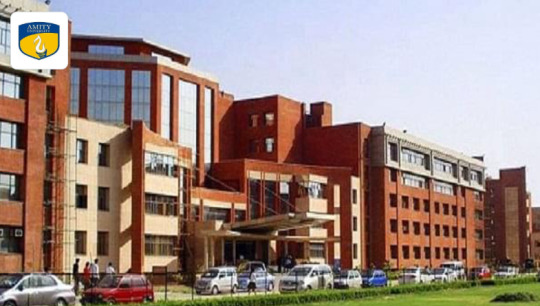
NITK also houses a commercial complex with a bank, ATMs, a post office, a medical center, shopping outlets, and multiple food courts and cafeterias. The presence of the private NITK beach, located right beside the campus, adds a unique charm to the student experience.
Sports and Extracurricular Activities
NITK places a strong emphasis on overall student development. The campus includes extensive sports facilities: a modern gymnasium, indoor and outdoor courts, athletics tracks, and a swimming pool. Students actively participate in sports, cultural events, and technical festivals.
The institute hosts various clubs and societies that cater to interests in robotics, music, dance, drama, literature, coding, and photography. Major student-run festivals include “Engineer” (technical fest), “Incident” (cultural fest), and “Spandan” (sports fest), attracting participants from across the country.
Research and Innovation
Research is a core focus area at NITK. Each department actively participates in research initiatives funded by government agencies such as the Department of Science and Technology (DST), Council of Scientific and Industrial Research (CSIR), and the Ministry of Education.
The institute is home to several Centers of Excellence and specialized research labs. These centers work on contemporary challenges in renewable energy, data science, artificial intelligence, climate change, materials science, and more.
Students and faculty regularly publish in peer-reviewed international journals and present papers at global conferences. The institute also encourages innovation through entrepreneurship development programs, startup support initiatives, and intellectual property facilitation.
Industry Collaboration and Placements
NITK has established strong linkages with industry through its Training and Placement Cell. The institute enjoys an excellent reputation among recruiters, with over 300 companies visiting the campus annually. These include top multinational corporations in software, core engineering, consulting, finance, and analytics sectors.
Some of the key recruiters include Microsoft, Google, Amazon, Infosys, Wipro, Tata Consultancy Services, Larsen & Toubro, Mahindra & Mahindra, and Schlumberger. Many students also secure international job offers or pursue higher studies at globally reputed universities.
The placement statistics at NITK are consistently impressive. The average salary package for undergraduate students ranges between ₹12 to ₹18 lakh per annum, with the highest packages going above ₹50 lakh per annum. Internship opportunities, pre-placement offers (PPOs), and industry-sponsored projects are a regular part of the academic journey.
Global Exposure and Academic Collaborations
NITK promotes internationalization through academic exchange programs, research collaborations, and MoUs with foreign universities. The institute partners with institutions across the USA, Germany, Japan, and other countries to facilitate faculty and student exchange, joint degree programs, and collaborative research projects.
Students are encouraged to participate in international conferences, workshops, and internships abroad, adding a global perspective to their technical expertise. Faculty members are also active in global research communities and advisory boards.
Community Engagement and Recent Initiatives
In addition to academic excellence, NITK contributes actively to social development. The institute recently partnered with the Dakshina Kannada district administration to form a civic think tank consortium. This initiative allows faculty and students to contribute to local governance and policy-making in areas like infrastructure, sustainability, and urban planning.
NITK also runs outreach programs aimed at school students, women in STEM, and rural education. Through initiatives such as workshops, rural internships, and awareness drives, the institute fulfills its social responsibility.
Student Life and Campus Culture
Life at NITK Surathkal is vibrant, diverse, and enriching. Students come from all parts of India, creating a multicultural and inclusive campus environment. The institution promotes a strong sense of community and independence among students. Hostel life, evening walks on the beach, late-night group studies, and festival celebrations all contribute to memorable college experiences.
The Student Council and various departmental associations ensure that students have a voice in decision-making and event organization. NITK’s alumni network is active and spread across top companies, universities, and leadership roles worldwide, offering a strong support system and mentorship opportunities.
Conclusion
National Institute of Technology Karnataka (NITK), Surathkal, stands out as a model institution for engineering education in India. With its picturesque campus, rigorous academics, cutting-edge research, and strong industry integration, NITK continues to nurture future leaders, innovators, and socially conscious engineers. Its commitment to academic freedom, community service, and global competence ensures that students graduate not just with degrees, but with the skills, ethics, and vision to shape a better world.
1 note
·
View note
Text
The Benefits of Pursuing a B Tech in Civil Engineering at Chitkara University

Civil engineering plays a crucial role in shaping the physical and social infrastructure of modern societies. From constructing towering skyscrapers to developing sustainable transportation networks, civil engineers are the architects of progress. Pursuing a B Tech in Civil Engineering from Chitkara University offers students a unique opportunity to gain knowledge, skills, and industry exposure that can propel them toward a successful career.
Why Choose Chitkara University for a B Tech in Civil Engineering?
Chitkara University is recognized for its student-centric approach, innovative pedagogy, and commitment to producing industry-ready graduates. The B Tech in Civil Engineering program at Chitkara University is meticulously designed to offer a blend of theoretical concepts and practical experience, making it one of the top choices for aspiring civil engineers.
Here are some of the key benefits of pursuing this degree at Chitkara University:
1. Comprehensive Curriculum
The B Tech in Civil Engineering program at Chitkara University covers a wide range of topics essential for modern civil engineers. The curriculum includes:
Structural engineering
Geotechnical engineering
Environmental engineering
Transportation and urban planning
Hydraulics and water resource management
The inclusion of industry-relevant subjects ensures that students stay updated with the latest advancements and challenges in civil engineering.
2. Practical Learning Opportunities
Chitkara University emphasizes experiential learning through hands-on projects, internships, and site visits. Students gain practical exposure to real-world challenges, helping them develop problem-solving skills and a deeper understanding of engineering principles.
3. State-of-the-Art Infrastructure
The university provides access to advanced laboratories and equipment, enabling students to experiment and innovate. Facilities such as CAD labs, material testing labs, and environmental labs give students the tools they need to excel in their field.
4. Expert Faculty and Industry Mentors
Chitkara University boasts a team of experienced faculty members who bring both academic expertise and industry insights to the classroom. Regular interactions with industry mentors prepare students for the expectations of the job market.
5. Industry Collaborations and Placement Opportunities
Chitkara University has strong collaborations with leading companies in the civil engineering sector. The robust placement cell ensures that students secure positions in reputed organizations. Roles often offered to graduates include:
Structural Engineer
Construction Manager
Transportation Planner
Environmental Engineer
6. Focus on Sustainability and Innovation
In response to global challenges like climate change, Chitkara University’s program places a strong emphasis on sustainable construction practices and innovative technologies. Students are encouraged to explore eco-friendly solutions and smart construction techniques.
7. Research and Development Opportunities
For students interested in academic and research careers, the B Tech in Civil Engineering program at Chitkara offers numerous opportunities to participate in research projects. The university’s research facilities and collaborations with international institutions make it an ideal place for budding researchers.
8. Global Exposure
Chitkara University offers opportunities for global exposure through student exchange programs and international conferences. This exposure helps students understand global trends and adapt to diverse working environments.
Career Opportunities After a B Tech in Civil Engineering
Graduates of the B Tech in Civil Engineering program from Chitkara University find rewarding career opportunities in various domains:
Construction Management Professionals in this field oversee construction projects, ensuring they are completed on time, within budget, and meet quality standards.
Structural Engineering Structural engineers design and analyze buildings, bridges, and other structures to ensure their safety and durability.
Environmental Engineering This role focuses on developing sustainable solutions to environmental challenges, such as waste management and water treatment.
Urban and Transportation Planning Engineers in this domain work on designing and maintaining efficient transportation systems and urban infrastructure.
Hydrology and Water Resources Engineering This specialization involves managing water resources for irrigation, urban water supply, and flood control.
Why is Now the Right Time to Pursue a B Tech in Civil Engineering?
The global construction and infrastructure industry is expected to grow significantly in the coming years, driven by urbanization, technological advancements, and the demand for sustainable solutions. A B Tech in Civil Engineering equips students with the skills needed to capitalize on these trends and contribute meaningfully to societal progress.
Final Thoughts
Pursuing a B Tech in Civil Engineering at Chitkara University is more than just earning a degree—it’s an opportunity to develop the skills, knowledge, and networks necessary for a fulfilling career. With its industry-aligned curriculum, focus on innovation, and strong placement support, Chitkara University ensures its graduates are well-prepared to excel in the competitive field of civil engineering.
FAQs
1. What is the duration of the B Tech in Civil Engineering program at Chitkara University? The program is typically 4 years, divided into 8 semesters.
2. Does Chitkara University provide internship opportunities for civil engineering students? Yes, the university has strong industry collaborations and offers internships with leading companies in the civil engineering sector.
3. What are the key focus areas in the curriculum? The curriculum covers structural engineering, geotechnical engineering, environmental engineering, transportation planning, and sustainable construction practices.
4. Are there placement opportunities after completing the degree? Absolutely, Chitkara University’s placement cell ensures students secure positions in reputed organizations with excellent career prospects.
5. Is global exposure a part of the program? Yes, Chitkara University offers international collaborations, exchange programs, and global conferences for civil engineering students.
#b tech in civil engineering#b tech civil engineering#b tech civil engineering fees#machine learning in civil engineering
0 notes
Text
Discover the Best Civil Engineering Colleges in Jaipur – Why SGVU Tops the List
Are you planning to pursue a career in civil engineering and looking for the best place to begin? Jaipur, known for its academic excellence and growing infrastructure, is home to some of the most reputed engineering colleges in Rajasthan. If you're searching for the best civil engineering colleges in Jaipur, this guide will help you explore your options — and explain why Suresh Gyan Vihar University (SGVU) is widely regarded as the leading civil engineering college in Jaipur.
Why Jaipur is a Great Choice for Civil Engineering
Jaipur has emerged as a top destination for technical education. With a perfect blend of historic charm and modern development, the city offers students an inspiring environment to learn and grow. Civil engineering colleges in Jaipur are known for their updated curriculum, experienced faculty, well-equipped laboratories, and strong placement networks.
Best Civil Engineering Colleges in Jaipur
Several institutions in Jaipur offer quality civil engineering programs. Some of the best civil engineering colleges in Jaipur include:
MNIT Jaipur (Malaviya National Institute of Technology) – A centrally funded institution known for research and academic excellence.
Poornima College of Engineering – Offers a strong foundation in civil engineering with industry exposure.
JECRC University – Known for technical programs and a focus on innovation.
Manipal University Jaipur – Offers modern infrastructure and a global learning approach.
Suresh Gyan Vihar University (SGVU) – A future-focused university known for academic strength, industry links, and holistic development.
Among these, SGVU consistently ranks as the most preferred civil engineering college in Jaipur due to its student-centric approach and industry relevance.
Why SGVU is the Best Civil Engineering College in Jaipur
Suresh Gyan Vihar University offers a unique combination of academic excellence, modern infrastructure, and practical exposure that sets it apart from other colleges. Here’s why SGVU is often listed at the top among the best civil engineering colleges in Jaipur:
1. Future-Ready Curriculum
SGVU’s civil engineering program is designed in collaboration with industry experts, ensuring that students learn current technologies, tools, and methods used in the field.
2. Experienced and Supportive Faculty
The university’s faculty includes professors, researchers, and industry professionals who provide quality education and mentorship to students.
3. High-Tech Labs and Real-World Training
SGVU offers advanced laboratories and project-based learning in areas like structural design, environmental engineering, transportation, and construction management.
4. Strong Placement Opportunities
With dedicated placement support, SGVU students secure jobs in top infrastructure and construction companies, government agencies, and consultancy firms.
5. Research and Innovation Culture
SGVU encourages students to participate in research and development, work on live projects, and present papers at national and international conferences.
6. Recognized and Accredited Institution
Accredited by NAAC and recognized by UGC, SGVU stands tall as a reputable and trustworthy institution for civil engineering in Jaipur.
7. Student-Centered Campus Life
Beyond academics, SGVU offers a vibrant campus life with extracurricular activities, workshops, industrial visits, and student clubs to foster overall development.
Final Thoughts
Choosing the right civil engineering college in Jaipur can make all the difference in your career path. While Jaipur has several reputed institutions, Suresh Gyan Vihar University stands out for its quality education, strong industry connections, research-driven environment, and excellent placements.
If you're looking for a university that will prepare you for the future of engineering, SGVU is the ideal destination. It’s more than just a college — it’s a launchpad for your success in the civil engineering world.
0 notes
Text
A Comprehensive Guide to Direct Admission in Manipal Institute of Technology
Introduction to Manipal Institute of Technology
The Manipal Institute of Technology (MIT) stands as one of India’s premier engineering institutions, established in 1957. Part of the larger Manipal Academy of Higher Education, MIT has earned a robust reputation for excellence in technical education. Its expansive campus, featuring state-of-the-art facilities, provides an ideal environment for students to pursue their academic aspirations. From modern laboratories to well-equipped libraries, MIT ensures that students have access to the resources necessary for a well-rounded educational experience.
MIT offers an array of undergraduate and postgraduate programs in various engineering disciplines, including Computer Science, Civil Engineering, Mechanical Engineering, and Electronics. The curriculum is meticulously designed to bridge theoretical concepts with practical applications, thereby preparing graduates for industry demands. Additionally, the institute emphasizes research and innovation, encouraging students to engage in various projects and internships that enhance their learning experience.
What truly distinguishes the Manipal Institute of Technology is its vibrant student life. With numerous clubs, technical societies, and cultural events, students are immersed in a dynamic environment that fosters collaboration and creativity. This engagement helps in cultivating soft skills essential for both personal and professional growth. Moreover, MIT regularly hosts national and international conferences, engaging students with industry experts and enhancing networking opportunities.
The accolades received by MIT further testify to its commitment to quality education. Various surveys and rankings consistently position the institute among the top engineering colleges in India, making it a sought-after destination for aspiring engineers. The institute's focus on overall development, coupled with its strategic location in Manipal, makes direct admission in Manipal Institute of Technology a highly attractive option for students seeking exemplary education in engineering and technology.
Understanding Direct Admission in MIT
Direct admission in Manipal Institute of Technology (MIT) presents an alternative pathway for prospective students seeking enrollment without the pressures associated with traditional entrance exams. This approach is designed to facilitate a smoother transition into higher education, particularly for those who may not excel in competitive examination formats or have experienced challenges during the selection process.
Eligibility criteria for direct admission in MIT typically encompass students who have achieved a minimum percentage in their board examinations (10+2 or equivalent). This requirement allows a broader range of applicants, including those who might not have performed well in entrance exams. Furthermore, MIT reserves a portion of its seats specifically for this admission mode, ensuring that deserving candidates have a fair chance to pursue their educational aspirations.
The process of securing direct admission in Manipal Institute of Technology involves several steps. First, candidates must complete their 10+2 education with science subjects, particularly focusing on mathematics and physics. Interested students should then apply through the official MIT website, where they can find detailed information about the admission process, including necessary documentation and deadlines. After submitting the application, candidates may be required to attend an interview or counseling session to further assess their fit for the selected programs.
One of the significant advantages of opting for direct admission is the reduction of stress experienced during the competitive examination phase. Unlike traditional methods that often require extensive preparation and can be anxiety-inducing, students can focus on their academic performance without the added pressure of exam results. Moreover, this admission process allows for quicker enrollment, enabling students to start their academic journey at MIT sooner compared to conventional routes. Furthermore, direct admission in MIT opens doors for students who may have otherwise missed out on opportunities due to limited availability in standard admission processes.
Step-by-Step Process for Direct Admission
Securing direct admission in Manipal Institute of Technology (MIT) involves several crucial steps that prospective students must follow meticulously. The process begins with an online application, which can be accessed on the official MIT website. It is essential for students to create an account and fill out the application form with accurate personal and academic details. This initial step sets the stage for a successful admission journey.
After completing the online application, applicants are required to submit specific documentation. This typically includes academic transcripts from previous institutions, a copy of the qualifying examination results, proof of identity, and a recent passport-sized photograph. Each document must be submitted in a clear format as illegible submissions can lead to application rejections. Furthermore, keeping track of important deadlines is imperative; students should note the official dates for application submissions, document uploads, and any announcements regarding admission decisions.
In some instances, there may be an application fee associated with securing direct admission in Manipal Institute of Technology. It is advisable to check the fee structure on the MIT website, ensuring timely payment to avoid any hassles. Furthermore, applicants must focus on enhancing their application to stand out in a competitive environment. Highlighting academic achievements, relevant extracurricular activities, and crafting a compelling personal statement can significantly increase the chances of successful admission. A personal statement should clearly articulate the applicant’s aspirations, motivation for choosing MIT, and specific program interests, showcasing their unique qualities.
By adhering to this step-by-step process, students can navigate the complexities of direct admission successfully. By being diligent and thorough in each stage, prospective students enhance their opportunities for admission into one of the premier engineering institutions in the country.
Frequently Asked Questions about Direct Admission in Manipal Institute of Technology
As prospective students explore the opportunity for direct admission in Manipal Institute of Technology (MIT), various questions often arise regarding the process, policies, and implications of this pathway. This section addresses some of the most common inquiries to help students and their families navigate their options effectively.
One of the primary concerns pertains to the validity of the direct admission process itself. Students often wonder if securing a place through this method impacts the legitimacy of their degree. It is crucial to understand that direct admission in MIT is a recognized pathway and does not detract from the quality of education provided by the institution.
The management quota plays a significant role in the context of direct admissions at MIT. Many students seek clarity on how this quota functions and its implications for college choice. The management quota allows a limited number of seats to be filled through direct admission, typically offering flexibility for students who may not meet standard admission criteria through traditional examinations. However, it is essential to be aware of the associated fees and criteria.
In light of the COVID-19 pandemic, many potential applicants express concern regarding how this situation has impacted the admissions landscape. Institutions like MIT have adapted to these unprecedented times by modifying their admission criteria and processes to accommodate the challenges faced by students, including the widespread cancellation of entrance exams. Therefore, keeping abreast of updates from MIT is advised for prospective applicants.
Another common query involves scholarship opportunities available for students pursuing direct admission. MIT offers various scholarships aimed at meritorious students, and those seeking direct admission may still qualify based on academic performance and other criteria.
Lastly, counseling plays a pivotal role in helping students make informed choices about their education pathways. Engaging in counseling sessions can provide invaluable insights, helping candidates understand their strengths and align their aspirations with suitable programs available at MIT.
0 notes
Text
Holidays 10.28
Holidays
Bhai Dooj (India)
Bhai Tika (Nepal)
Children’s Day (Australia)
Chucks-N-Pearls Day
Civil Servants’ Day (Brazil)
Common Fig Day (French Republic)
Cox Plate Day (Australia)
Day of International Concern About Young People and Gun Violence
Engineer’s Day (Venezuela)
Flying Baby Day
Folly Day
Gone-ta-Pott Day [every 28th]
Hari Sumpah Pemuda (Youth Pledge Day; Indonesia)
Honoring the Nation’s First Responders Day
International Animation Day
International Creole Day
Liberation of Ukraine from Nazi Invaders Day (Ukraine)
Milvian Bridge Day
National Caroline Day
National Comprehensive Sex Education Call-In Day
National Cry Yourself to Sleep Day
National Day of Outrage
National First Responders Day
National I Love You Day
National Immigrants Day
National Internal Medicine Day
National Internment Commemoration Day (Canada)
National William Day
Ohi Day (a.k.a. Ochi! Day or Oxi Day; Cyprus, Greece)
Part Your Hair Crooked Just To See If Anyone Will Say Anything About It Day
Plush Animal Lover's Day
Prefectural Earthquake Disaster Prevention Day (Gifu, Japan)
Q Day
Republic Day Eve (Turkey)
Separation of Church and State Day
Stan Lee Day (Los Angeles)
Stargate Day
Statue of Liberty Day
Ticker-Tape Parade Day
Time Day
Twitter Emancipation Day
Ugly Pickup Truck Day
Vote Early Day
World Judo Day
World Tobacco Growers’ Day
Youth Pledge Day (Indonesia)
Food & Drink Celebrations
National Chocolate Day
Wild Foods Day
4th & Last Monday in October
African-American Cotton Pickers’ Day [4th Monday]
Bank Holiday (Ireland) [Last Monday]
Equality Day (Antarctica) [4th Monday]
Green Monday [Monday of Last Full Week]
International School Library Day [4th Monday]
Labour Day (New Zealand) [4th Monday]
La Saoire i mi Dheireadh Fomhair [Last Monday]
Meatless Monday [Last Monday of Each Month]
Meditation Monday [Every Monday]
Monday Musings [Every Monday]
Moody Monday [Last Monday of Each Month]
Motivation Monday [Every Monday]
October Bank Holiday (Ireland) [Last Monday]
School Library Day (Canada) [Last Monday]
Independence & Related Days
Bokonton (Declared; 2007) [unrecognized]
Czechoslovakia (Now the Czech Republic; from Austria-Hungary, 1918)
Erusia (Declared; 2008) [unrecognized]
Foundation Day (Davao Occidental, Philippines)
United Republics of Michigan (Declared; 2019) [unrecognized]
Weekly Holidays beginning October 28 (Last Week of October)
Hudson Valley Restaurant Week (Hudson Valley, New York) [thru 11.10]
Festivals Beginning October 28, 2024
American Indian Tourism Conference (Marksville, Louisiana) [thru 10.31]
Supply Side West (Las Vegas, Nevada) [thru 10.31]
TechCrunch Disrupt (San Francisco, California) [thru 10.30]
Tokyo International Film Festival (Tokyo, Japan) [thru 11.6]
Feast Days
Abdias of Babylon (Christian; Saint)
Abgar V of Edessa (Eastern Orthodox Church)
Ayad Akhtar (Writerism)
Eadsige (Christian; Saint)
Evelyn Waugh (Writerism)
Extra Kinky Day (Pastafarian)
Faro, Bishop of Meauz (Christian; Saint)
Feast of the Einherjar (Norse)
Feast of the Lord of Miracles (Peru)
Fidelis of Como (Roman Catholic Church)
Firmilian (Christian; Saint)
Francis Bacon (Artology)
Fyribod (a.k.a. Forebode; Norse beginning of Winter)
Godwin of Stavelot (Christian; Saint)
Gumby Day (Church of the SubGenius; Saint)
Isis/Osiris Mysteries I (Pagan)
Job of Pochayiv (repose) (Eastern Orthodox Church)
Jude Thaddeus (a.k.a. Jude the Apostle; Western Christianity)
Leibnitz (Positivist; Saint)
Lord of Miracles (Lima; Christian; Saint)
Makoshe’s Holiday (Honoring Mother Earth; Asatru/Pagan Slavic)
Michael Noakes (Artology)
Neot (Christian; Saint)
Paraskrevi of Iconium (Christian; Saint)
Simon the Zealot (a.k.a. Simon the Canaanite; Simon the Apostle; Western Christianity)
The Tortoise (Muppetism)
Lucky & Unlucky Days
Butsumetsu (仏滅 Japan) [Unlucky all day.]
Umu Limnu (Evil Day; Babylonian Calendar; 50 of 60)
Premieres
All Quiet on the Western Front (Film; 2022)
An Alpine Symphony, by Richard Strauss (Tone Poem; 1915)
Barking Dogs Don’t Fite (Fleischer/Famous Popeye Cartoon; 1949)
Because I Got High, by Afroman (Song; 2001)
Bee Movie (Animated Film; 2007)
Black Beauty (Hanna-Barbera Animated TV Special; 1978)
The Blue Danube (MGM Cartoon; 1939)
Breakfast at Tiffany’s, by Truman Capote (Novella; 1958)
Decade, by Neil Young (Compilation Album; 1977)
Decline and Fall, by Evelyn Waugh (Novel; 1928)
The Desperate Showers (George of the Jungle Cartoon; 1967) [#8]
Droopy (Tex Avery Droopy MGM Cartoon; 1955)
Educating Rita (Film; 1983)
The Futurological Congress: From the Memoirs of Ijon Tichy, by Stanisław Lem (Novel; 1971)
Gulliver’s Travels, by Jonathan Swift (Novel; 1726)
How Green Was My Valley (Film; 1941)
Inferno (Film; 2016)
Kiss Meets the Phantom of the Park (TV movie; 1978)
The Legend of Zorro (Film; 2005)
Man's Search for Meaning, by Viktor E. Frankl (Philosophical Book; 1959)
News of the World, by Queen (Album; 1978)
The Ones Who Walk Away from Omelas, by Ursula K. Le Guin (Short Story; 1973)
The Pet Store (Disney Cartoon; 1933)
Pinterest (Social Media App; 2009)
Pop ‘im Pop! (WB LT Cartoon; 1950)
Puss in Boots (Animated Film; 2011)
Pussy Willie (Oswald the Lucky Rabbit Cartoon; 1929)
Puttin’ On the Dog (Tom & Jerry Cartoon; 1944)
The Quail Hunt (Oswald the Lucky Rabbit Cartoon; 1935)
Richard Pryor … Here and Now (Stand-Up Comedy Film; 1983)
Rotten Hood (Super Chicken Cartoon; 1967) [#18
The Rum Diary (Film; 2011)
Stargate (Film; 1994)
String Along Pink (Pink Panther Cartoon; 1978)
Supermarket Pink (Pink Panther Cartoon; 1978)
Talking Book, by Stevie Wonder (Album; 1972)
Tinker Bell (Animated Film; 2008)
We Can’t Dance, by Genesis (Album; 1991)
Today’s Name Days
Judas, Simon, Thaddeus (Austria)
Juda, Šimun, Siniša, Tadej, Tadija (Croatia)
Státní Svátek (Czech Republic)
Judas, Simon (Denmark)
Siim, Siimo, Siimon, Siimu, Simmo, Simmu, Simun (Estonia)
Simo (Finland)
Jude, Simon (France)
Freddy, Simon (Germany)
Evniki, Vili (Greece)
Simon, Szimonetta (Hungary)
Giuda, Simone (Italy)
Antoņina, Ņina, Ninona, Zemgals (Latvia)
Almantė, Gaudrimas, Simas, Simonas, Tadas (Lithuania)
Simen, Simon (Norway)
Juda, Szymon, Tadeusz, Wszeciech (Poland)
Iachint (Romania)
Dobromila (Slovakia)
Judas, Simón (Spain)
Simon, Simone (Sweden)
Nestor (Ukraine)
Dayanara, Eunice, Jonah, Jonas, Jude, Liberty, Simeon, Simon, Simone, Thad, Thaddea, Thaddeus (USA)
Today is Also…
Day of Year: Day 302 of 2024; 64 days remaining in the year
ISO: Day 1 of Week 44 of 2024
Celtic Tree Calendar: Hagal (Hailstone) [Day 2 of 28]
Chinese: Month 9 (Jia-Xu), Day 26 (Yi-Chou)
Chinese Year of the: Dragon 4722 (until January 29, 2025) [Wu-Chen]
Hebrew: 26 Tishri 5785
Islamic: 24 Rabi II 1446
J Cal: 2 Wood; Oneday [1 of 30]
Julian: 14 October 2024
Moon: 12%: Waning Crescent
Positivist: 22 Descartes (11th Month) [Gibbon / Robertson]
Runic Half Month: Wyn (Joy) [Day 6 of 15]
Season: Autumn or Fall (Day 36 of 90)
Week: Last Week of October
Zodiac: Scorpio (Day 5 of 30)
1 note
·
View note
Text
Best PhD in Engineering College in Jaipur — Why SGVU Stands Out
Are you searching for the Best PhD in Engineering College in Jaipur? Look no further. In the heart of Rajasthan’s educational hub, Suresh Gyan Vihar University (SGVU) has emerged as a premier destination for doctoral studies in engineering. With world-class infrastructure, a robust research culture, and a student-centric approach, SGVU is the top choice for aspiring scholars aiming to contribute meaningfully to the field of engineering.
Why Pursue a PhD in Engineering?
A PhD in engineering opens doors to advanced research, teaching opportunities, and high-impact roles in industry and academia. It equips scholars with in-depth knowledge, problem-solving skills, and the ability to drive innovation in specialized domains such as computer science, civil, mechanical, electrical, and electronics engineering.
SGVU: The Best PhD in Engineering College in Jaipur
Suresh Gyan Vihar University has consistently proven its excellence through its commitment to quality education and research. Here’s why SGVU is widely regarded as the Best PhD in Engineering College in Jaipur:
1. NAAC ‘A’ Grade Accreditation
SGVU is one of the few private universities in Rajasthan to receive an ‘A’ grade from NAAC, reflecting its high academic standards and dedication to continuous improvement.
2. Experienced Faculty & Research Guides
The university boasts a team of highly qualified faculty members and research supervisors who are experts in their respective fields. They provide personalized mentorship and ensure scholars are guided effectively throughout their research journey.
3. Advanced Research Facilities
SGVU offers state-of-the-art laboratories, well-equipped research centers, and access to top journals and databases. This empowers scholars to conduct groundbreaking research across various branches of engineering.
4. Interdisciplinary Research Opportunities
The university promotes interdisciplinary collaboration, allowing PhD candidates to work on innovative projects that intersect with multiple domains like data science, AI, renewable energy, and smart infrastructure.
5. Flexible Learning & Supportive Environment
SGVU provides flexible timelines, structured coursework, and regular seminars to ensure a smooth PhD experience. The university’s focus on student well-being and academic support adds to its appeal.
6. Strong Industry Linkages
With tie-ups and collaborations with top industries and research institutions, SGVU offers opportunities for sponsored research, internships, and industry-based dissertations.
7. High Research Output
The university encourages publication in Scopus-indexed journals and international conferences, making it a hub for high-quality, globally recognized research.
Specializations Offered in PhD (Engineering) at SGVU
Computer Science Engineering
Mechanical Engineering
Civil Engineering
Electronics & Communication Engineering
Electrical Engineeringand more…
Each program is designed to foster analytical thinking, innovation, and academic excellence.
Final Thoughts
Choosing the right university for your doctoral studies is crucial, and SGVU provides the perfect ecosystem to nurture your research aspirations. With its exceptional faculty, top-tier facilities, and a track record of academic excellence, SGVU undoubtedly offers the Best PhD in Engineering College in Jaipur.
Whether you’re a working professional, a recent post-graduate, or someone with a passion for research, Suresh Gyan Vihar University offers a path to realize your potential and make a lasting impact in the field of engineering.
0 notes
Text
New tool evaluates progress in reinforcement learning
New Post has been published on https://sunalei.org/news/new-tool-evaluates-progress-in-reinforcement-learning/
New tool evaluates progress in reinforcement learning

If there’s one thing that characterizes driving in any major city, it’s the constant stop-and-go as traffic lights change and as cars and trucks merge and separate and turn and park. This constant stopping and starting is extremely inefficient, driving up the amount of pollution, including greenhouse gases, that gets emitted per mile of driving.
One approach to counter this is known as eco-driving, which can be installed as a control system in autonomous vehicles to improve their efficiency.
How much of a difference could that make? Would the impact of such systems in reducing emissions be worth the investment in the technology? Addressing such questions is one of a broad category of optimization problems that have been difficult for researchers to address, and it has been difficult to test the solutions they come up with. These are problems that involve many different agents, such as the many different kinds of vehicles in a city, and different factors that influence their emissions, including speed, weather, road conditions, and traffic light timing.
“We got interested a few years ago in the question: Is there something that automated vehicles could do here in terms of mitigating emissions?” says Cathy Wu, the Thomas D. and Virginia W. Cabot Career Development Associate Professor in the Department of Civil and Environmental Engineering and the Institute for Data, Systems, and Society (IDSS) at MIT, and a principal investigator in the Laboratory for Information and Decision Systems. “Is it a drop in the bucket, or is it something to think about?,” she wondered.
To address such a question involving so many components, the first requirement is to gather all available data about the system, from many sources. One is the layout of the network’s topology, Wu says, in this case a map of all the intersections in each city. Then there are U.S. Geological Survey data showing the elevations, to determine the grade of the roads. There are also data on temperature and humidity, data on the mix of vehicle types and ages, and on the mix of fuel types.
Eco-driving involves making small adjustments to minimize unnecessary fuel consumption. For example, as cars approach a traffic light that has turned red, “there’s no point in me driving as fast as possible to the red light,” she says. By just coasting, “I am not burning gas or electricity in the meantime.” If one car, such as an automated vehicle, slows down at the approach to an intersection, then the conventional, non-automated cars behind it will also be forced to slow down, so the impact of such efficient driving can extend far beyond just the car that is doing it.
That’s the basic idea behind eco-driving, Wu says. But to figure out the impact of such measures, “these are challenging optimization problems” involving many different factors and parameters, “so there is a wave of interest right now in how to solve hard control problems using AI.”
The new benchmark system that Wu and her collaborators developed based on urban eco-driving, which they call “IntersectionZoo,” is intended to help address part of that need. The benchmark was described in detail in a paper presented at the 2025 International Conference on Learning Representation in Singapore.
Looking at approaches that have been used to address such complex problems, Wu says an important category of methods is multi-agent deep reinforcement learning (DRL), but a lack of adequate standard benchmarks to evaluate the results of such methods has hampered progress in the field.
The new benchmark is intended to address an important issue that Wu and her team identified two years ago, which is that with most existing deep reinforcement learning algorithms, when trained for one specific situation (e.g., one particular intersection), the result does not remain relevant when even small modifications are made, such as adding a bike lane or changing the timing of a traffic light, even when they are allowed to train for the modified scenario.
In fact, Wu points out, this problem of non-generalizability “is not unique to traffic,” she says. “It goes back down all the way to canonical tasks that the community uses to evaluate progress in algorithm design.” But because most such canonical tasks do not involve making modifications, “it’s hard to know if your algorithm is making progress on this kind of robustness issue, if we don’t evaluate for that.”
While there are many benchmarks that are currently used to evaluate algorithmic progress in DRL, she says, “this eco-driving problem features a rich set of characteristics that are important in solving real-world problems, especially from the generalizability point of view, and that no other benchmark satisfies.” This is why the 1 million data-driven traffic scenarios in IntersectionZoo uniquely position it to advance the progress in DRL generalizability. As a result, “this benchmark adds to the richness of ways to evaluate deep RL algorithms and progress.”
And as for the initial question about city traffic, one focus of ongoing work will be applying this newly developed benchmarking tool to address the particular case of how much impact on emissions would come from implementing eco-driving in automated vehicles in a city, depending on what percentage of such vehicles are actually deployed.
But Wu adds that “rather than making something that can deploy eco-driving at a city scale, the main goal of this study is to support the development of general-purpose deep reinforcement learning algorithms, that can be applied to this application, but also to all these other applications — autonomous driving, video games, security problems, robotics problems, warehousing, classical control problems.”
Wu adds that “the project’s goal is to provide this as a tool for researchers, that’s openly available.” IntersectionZoo, and the documentation on how to use it, are freely available at GitHub.
Wu is joined on the paper by lead authors Vindula Jayawardana, a graduate student in MIT’s Department of Electrical Engineering and Computer Science (EECS); Baptiste Freydt, a graduate student from ETH Zurich; and co-authors Ao Qu, a graduate student in transportation; Cameron Hickert, an IDSS graduate student; and Zhongxia Yan PhD ’24.
0 notes